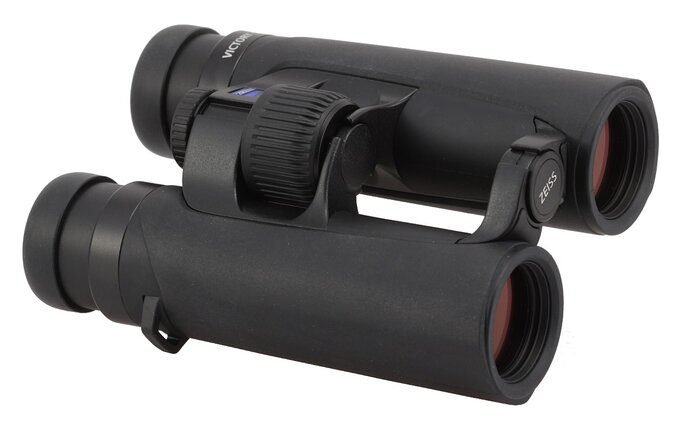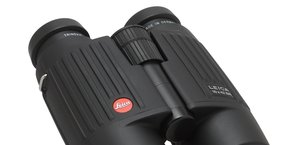Zeiss Victory SF 8x32 – first impressions
1. First impressions
Lately Zeiss have started to rebuild lines of their binoculars in a quite decisive manner and that trend also includes the 8×32 class. In 2004 they stopped production of the Zeiss Dialyt 8×30 B/GA T* ClassicC and, at the same time, they launched the cheaper Zeiss Conquest 8×30 T* along with the flagship Zeiss Victory FL T* 8×32. The Conquest 8×30 was produced untill 2012 and it was superseded by a much better successor, the Conquest HD 8×32, available on the market up to now.
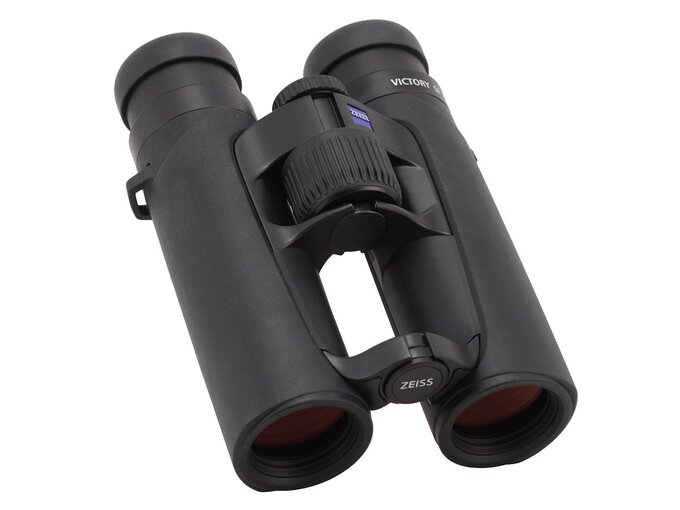 |
Please Support UsIf you enjoy our reviews and articles, and you want us to continue our work please, support our website by donating through PayPal. The funds are going to be used for paying our editorial team, renting servers, and equipping our testing studio; only that way we will be able to continue providing you interesting content for free. |
- - - - - - - - - - - - - - - - - - - - - - - - - - - - - - - - - - - - - - - - - - - - - - - -
New binoculars were supposed to hit the shelves during holidays and we thought we would be able to test them very soon. Unfortunately the outbreak of coronavirus thwarted our plans. Ever since a big part of Zeiss employees have been working remotely, the plants have had limited processing capabilities, and the supply of goods have been delayed. As a result we got the Zeiss Victory SF 8×32 for our tests in November instead of May or June. As the coronavirust remains active and is still thwarting many plans we don't know how long it will take us to conduct the full test of this pair of binoculars. However, after handling it, we've decided to share our first impressions.
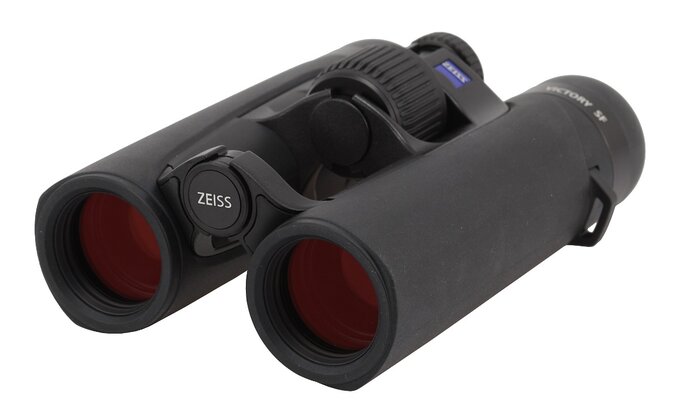 |
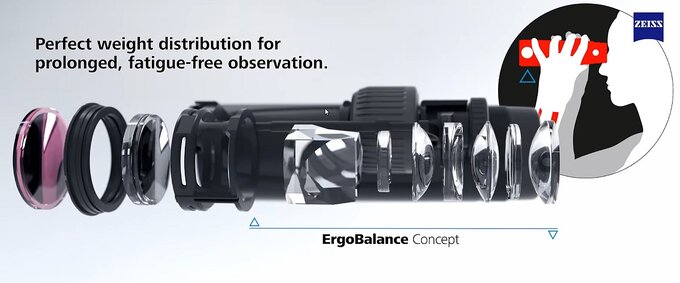 |
All air-to-glass surfaces are covered by anti-reflection Zeiss T* coatings. The Schmidt-Pechan prisms are also dielectric and phase-correction coated. The outer elements are protected by hydrophobic LotuTec layers.
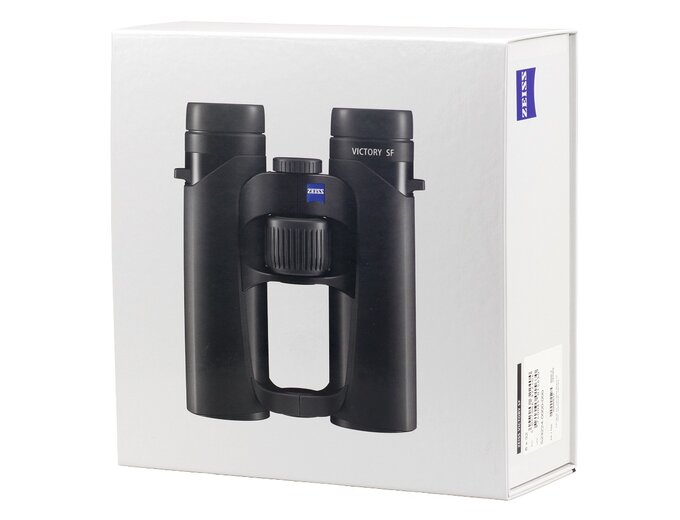 |
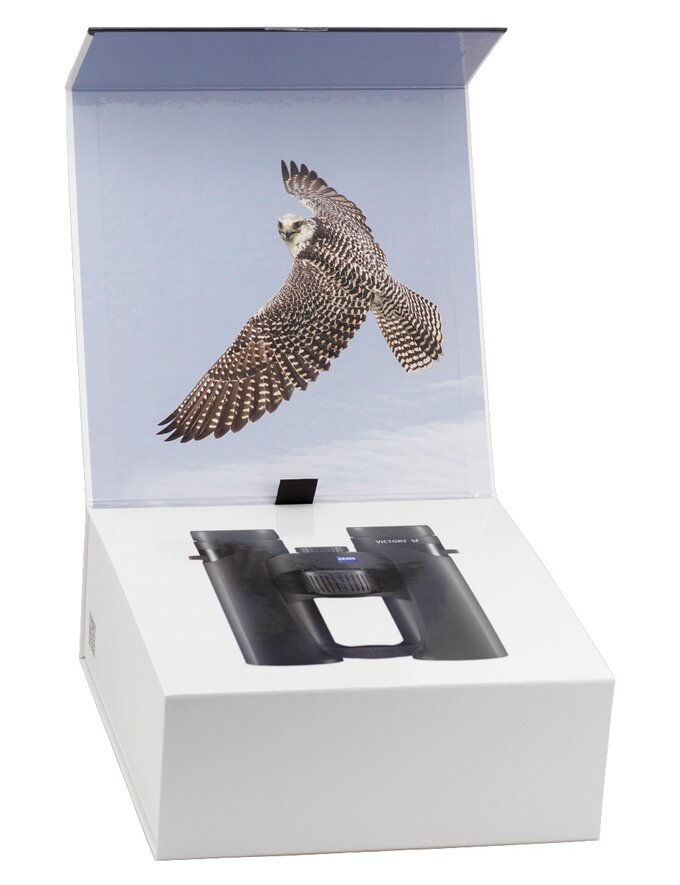 |
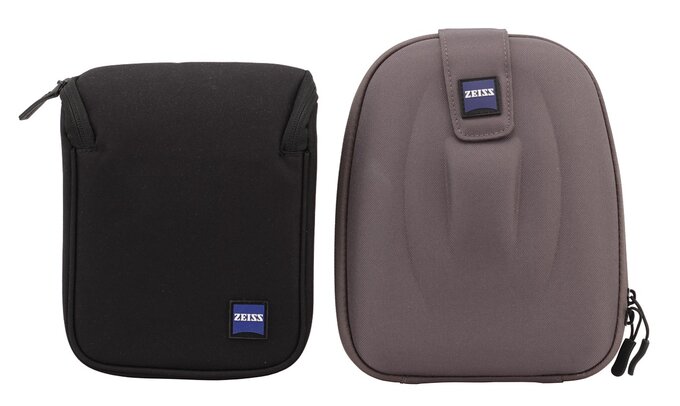 The cases for Zeiss SF 8×32 and SF 8×42 binoculars. |
Focusing is done through a significant central wheel which is positioned almost perfectly below your index finger. The wheel is covered by rubber ribs, it moves smoothly and is well damped. Running through the whole working range (so from the declared 1.95 meters to infinity) needs a turn through an angle of about 580 degrees. It is a sensible value, quite typical for this class of parameters. Dioptre correction is done by turning a smaller wheel, positioned in the middle of the instrument, separated from the main focus wheel by the proximal bridge. It performs exceedingly well – all operations are kept inside the casing, nothing moves on the outside, the construction remains completely sealed.
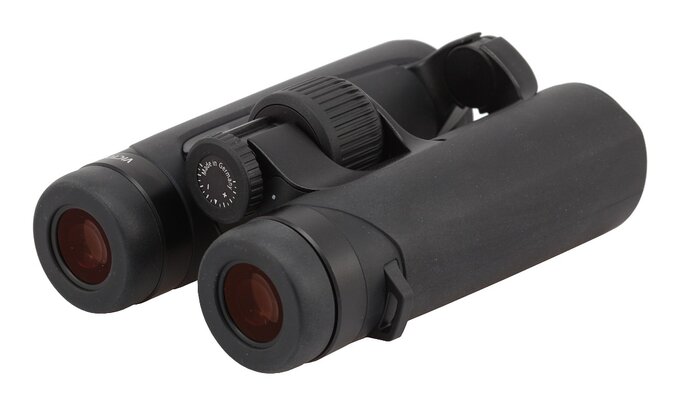 |
The cleanliness is also far from perfect. In both tubes I notices some specks of dust on the prisms; what's more, torch light reveals that the roof prism has a shiny edge. Once again we didn't expect such a problem as it is something a good quality piece of equipment should be free of.
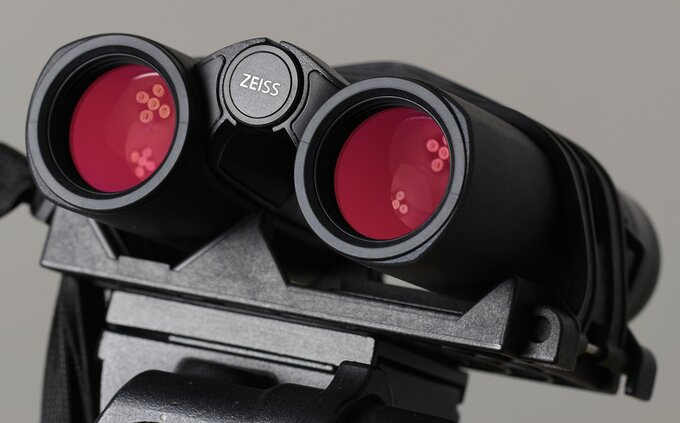 |
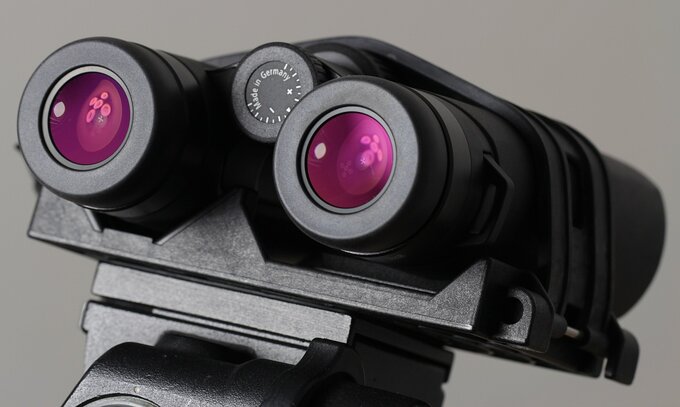 |
Now the time has come to describe our impressions after using the Zeiss Victory SF 8×32. Let's start with daytime observations.
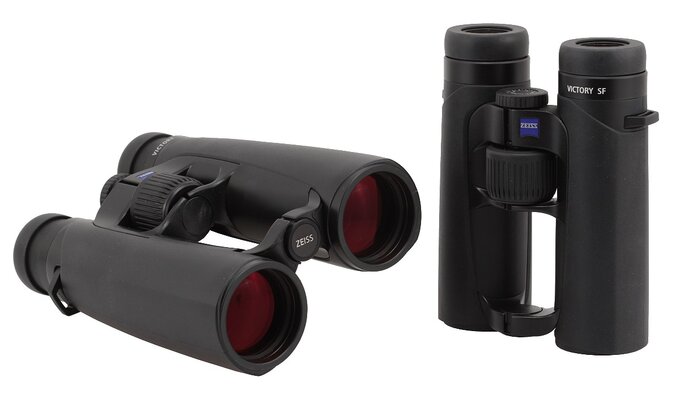 Zeiss Victory SF 8×42 and Zeiss Victory SF 8×32. |
Zeiss and Swarovski, their biggest rival, correct optics in quite different way. The binoculars from Austria provide a very flat field which is almost perfectly sharp till its edges. You have to pay for it, though, with weaker correction of chromatic aberration which in many Swarovski models makes itself felt rather keenly near the end of the field of view. The Zeiss Victory SF 8×32 corrects chromatic aberration ideally in the field centre and it is barely visible on the very edge. It is an excellent performance – few other pairs of binoculars deal with chromatic aberration so well. The price? A bit weaker correction of sharpness on the edges of the field. The effect is not especially pronounced, you can sitll notice many details there but the decrease of image quality in last 5-10% of the field surface makes itself felt. With such a wide field of view, almost completely devoid of chromatic aberration, it still remains a very good result.
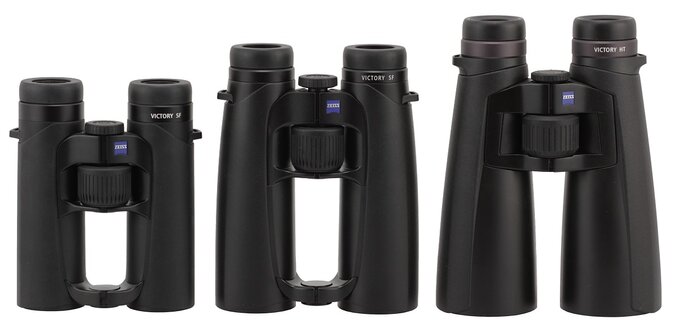 Zeiss Victory SF 8×32, Zeiss Victory SF 8×42 and Zeiss Victory HT 8×54. |
Exit pupils are positioned against a very dark background. Everything looks fine from this side but the shape of pupils is not exactly what we expect from a top-of-the-range instrument. They aren't round but truncated from one side. It is strange because the binoculars are not so small for the 32 mm class so the producers should have made sure there are no traces of mechanical vignetting.
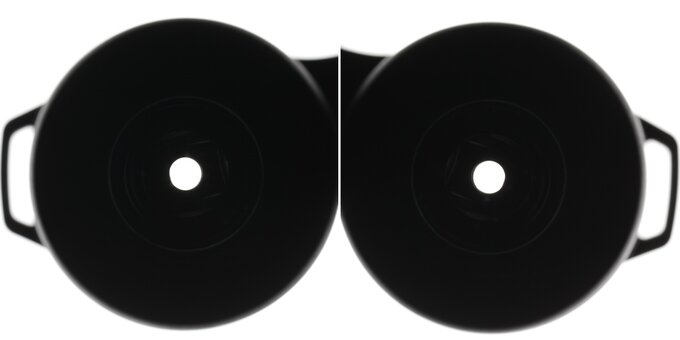 |
In main categories the Zeiss fared very well. Astigmatism is corrected sensationally well – stars in the centre of the field of view are almost ideally point-like, without even traces of sparking. After a slight defocusing they keep a circular shape. Coma on the very edge of the wide field is low, appearing only near 3/4 of the field of view radius. What's interesting, it doesn't increase gradually but first it goes up, then it keeps the same, rather low level, and finally it decreases.
Brightness loss on the very edge of the field is visible but not especially high. With such a wide field it is an effect not only understandable but also acceptable, especially as it doesn't cause any discomfort during observations.
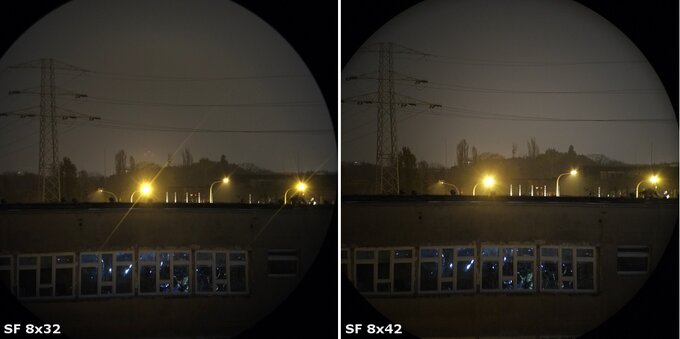 |
To sum up we are really pleased Zeiss enlarged their SF series, adding 32 mm models, especially that these pairs of binoculars practically set new standards, parameters-wise, in this class of equipment. They offer you an enormous field of view joined with a comfortable eye relief. It's worth reminding here that the 8×32 class binoculars rarely come with a field of view wider than 8.5 degrees and if they manage that trick it usually means a shorter eye relief. It's enough we mention here the much-praised and well-liked Nikon 8×30 EII which field of view is exactly the same as the field of view of the Zeiss Victory SF 8×32 but its eye relief is by over 5 mm shorter. For people wearing glasses such a difference might be crucial.
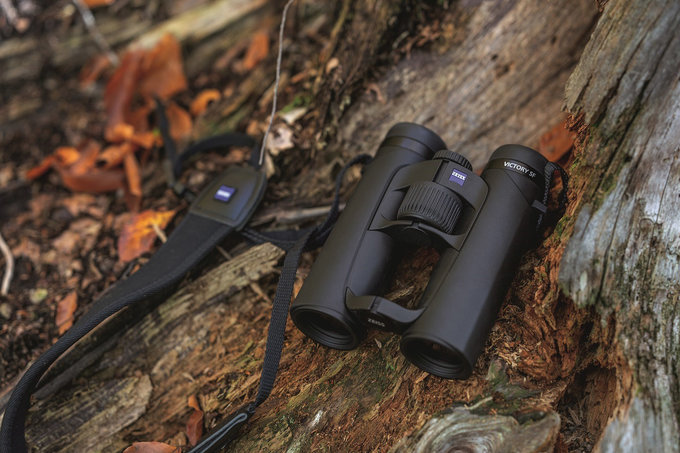 |
The Swarovski EL 8×32 is going to be the direct rival of the Zeiss and so far the new SF binoculars are not without advantages. The main advantage is of course its field of view, wider by as much as 0.8 of a degree. That field is also better corrected when it comes to chromatic aberration. The question is how long this advantage will hold. This year Swarovski presented NL Pure 42 mm models with really record-breaking fields of view. I suppose soon enough we will be shown some novelties in the 32 mm class as well. I am really curious how they will compare with the Zeiss. Of course you should keep in mind that the new Swarovski binoculars haven't been available yet and nobody can tell when they will be launched whereas the Zeiss is already available and, if you spend as much as 2000 Euro, you can enjoy its superior image quality and a very wide field of view without any delay.




